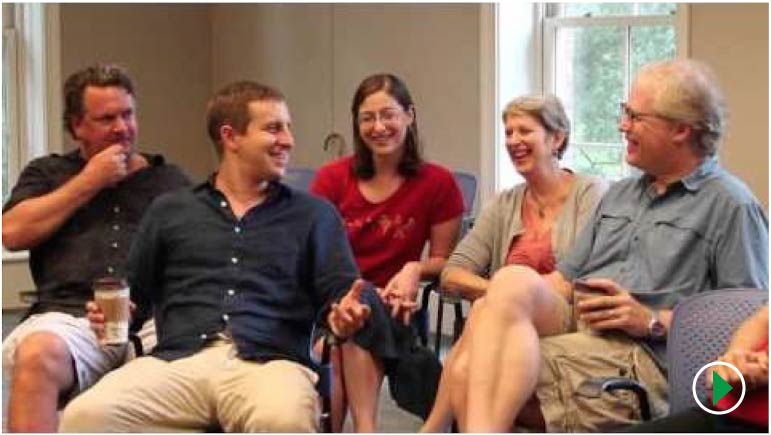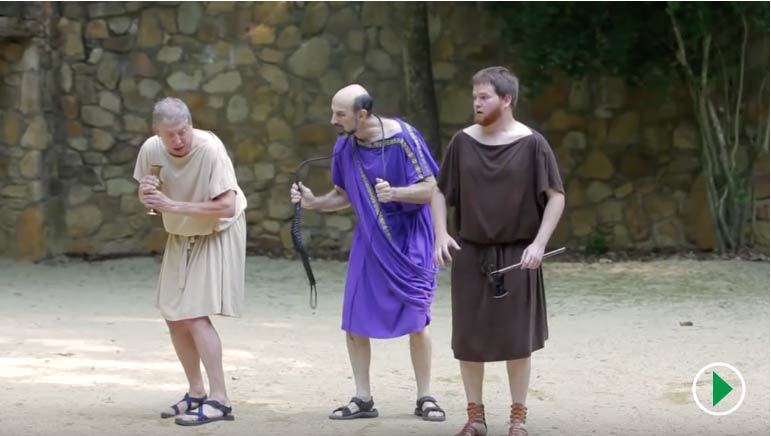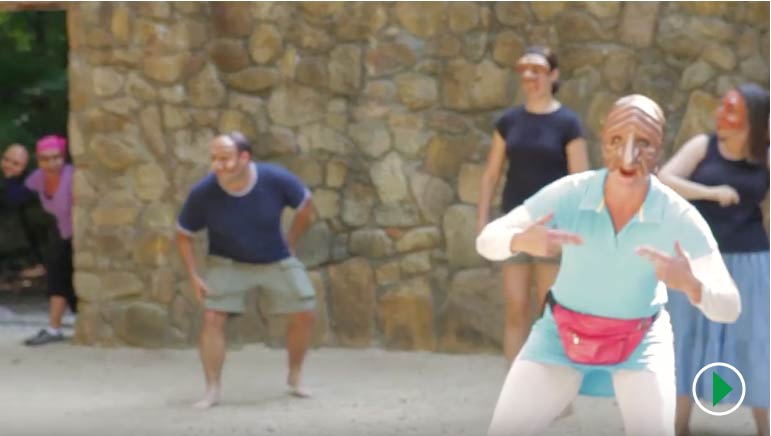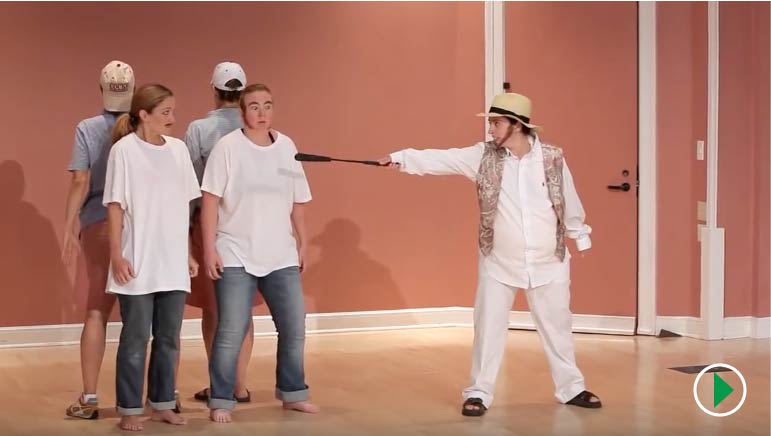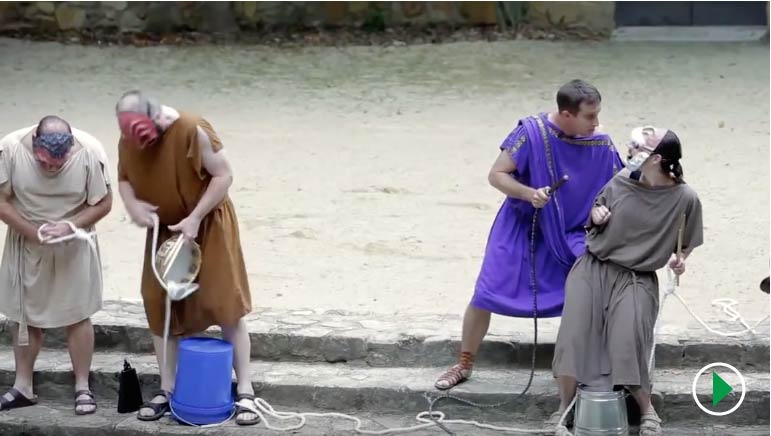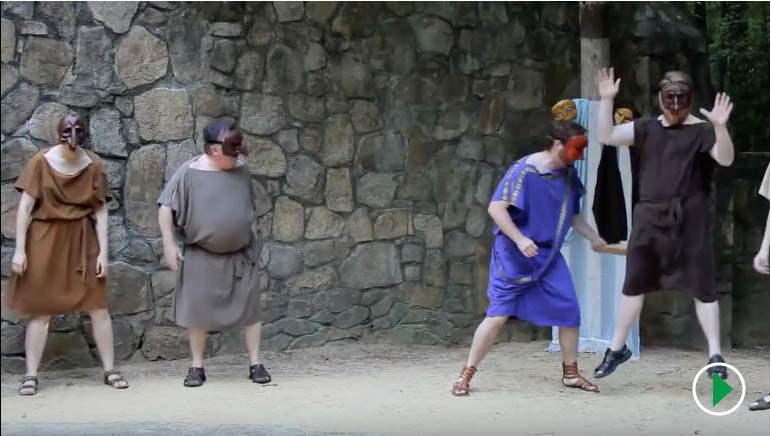Interviews and Reflections on the NEH Summer Institute on Roman Comedy in Performance
or
What We Did at Roman Comedy Camp
by Mike Lippman (The University of Nebraska at Lincoln) and Amy R. Cohen (Randolph College)
INTRODUCTION
In 2012 we were participants in the National Endowment for the Humanities Summer Institute on Roman Comedy in Performance, directed by Timothy J. Moore and Sharon L. James. The program brought together scholars and performers from a variety of fields and backgrounds to learn about the comedy of Plautus and Terence. Moore and James arranged for many experts in the field to visit and teach us over the course of the four weeks, and our task was to synthesize what we learned into performances of seven different scenes from the ancient plays, which would be videotaped and made publicly available.1
While everyone hoped that the scenes would speak for themselves in the YouTube videos, we realized that we needed to add a commentary. If we are to argue that the stage, for academic purposes, is a research laboratory and that these videos, not necessarily intended to be a works of art on their own terms, are instructive in the classroom, it is important to reveal the intentions behind the choices in order to make them more useful to the student or the researcher wanting to duplicate such processes for themselves. Thus, while everything was fresh in the participants' minds on the last days of the Institute, the two of us set up a series of panel discussions in the style of theater-production talkbacks, which allowed each group to explain the choices that led to their finished scenes and to take questions from the rest of the NEH seminarians. We began with the individual scenes from different plays (each group did numerous performances of the same scene with differing choices in each), and then we had a lengthy open discussion with the entire class about the five different group performances of the same Pseudolus scene (Ballio's birthday party 133-234).
We gave very few prompts as interviewers: we let each group say whatever they wanted as part of their self-explanations, and let the other members of the seminar ask the questions. We told them that we wanted to understand their process and whether their perspectives on the scenes changed as they worked on them, but once we set the tone for the Q&A, we didn't even have to ask these questions—the members began to speak unprompted. At points we merely brought things back around to stay on topic or helped to moderate, but, for the most part, these discussions are entirely unscripted and extemporaneous.
The talkbacks below (each arranged next to the scenes the group is discussing) capture what it felt like to be a participant in our discussions, with people from a wide array of backgrounds and approaches to both text and performance. Such conversations took place in the classroom, in the rehearsal space, and at the bar during the evening—and, as Plato has Socrates say,2 nothing written down can really capture the urgency and the vitality of a live conversation (or performance, for that matter). These videos show how we drew from our experiences in class and rehearsal, how we reacted to each other's ideas, and the thought processes that went into each finished product. What emerges from the seven talkbacks, among many details of process and collaboration, is how important performance of ancient texts is to pedagogical and scholarly endeavors. We hope that they will help with the understanding of the finished scenes preserved in the videos from the Institute.3
Bacchides 1116-1206
The Bacchides group—Jeanne Neumann, Ada Palmer, Daniel Walin, and Patrick Gray—use their time to talk about music and meter, improvisation, and singing versus speaking. They discuss the challenges of physical comedy, handling characterization, and dealing with uncomfortable female roles in Plautus.
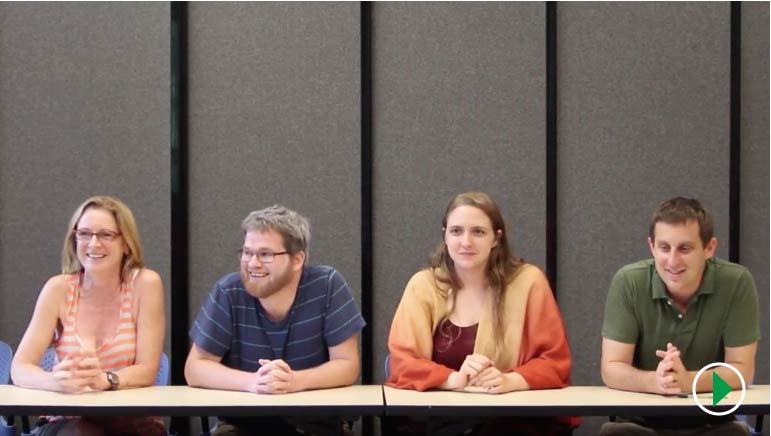 Bacchides group talkback. |
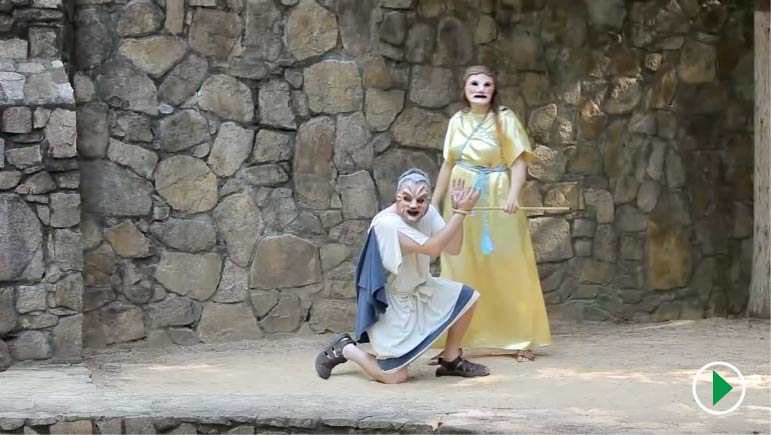 Bacchides in sung Latin |
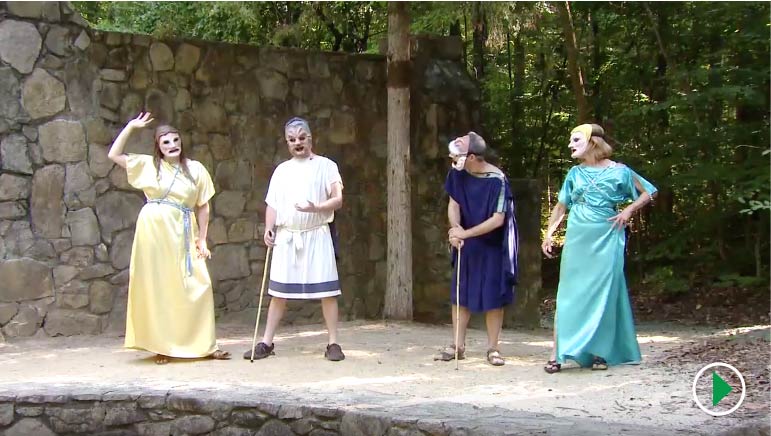 Bacchides in spoken English, with masks |
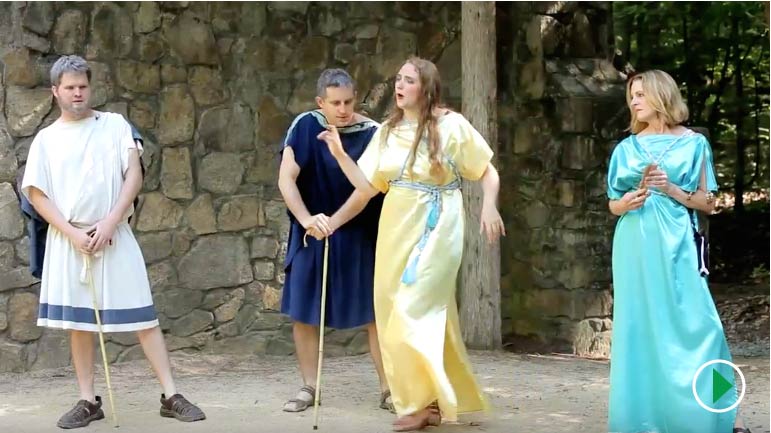 Bacchides in spoken English, without masks | |
Casina 353-423
The Casina group—Elizabeth Hall, Mike Lippman, Nancy Sultan, and Gian Giacomo Colli—discuss in detail issues to do with masks: how commedia masks (created by Colli), full face masks (created by Adam M. Dill), and helmet masks (created by Amy R. Cohen) affect the practicalities of performance (including questions of sound, limited vision, and fight choreography) and also how each kind of mask prompts different ways of addressing the material of the scene. They also talk about how they dealt with translation of the scene and their various comedy inspirations, including Looney Tunes, commedia dell'arte, and improvisation.
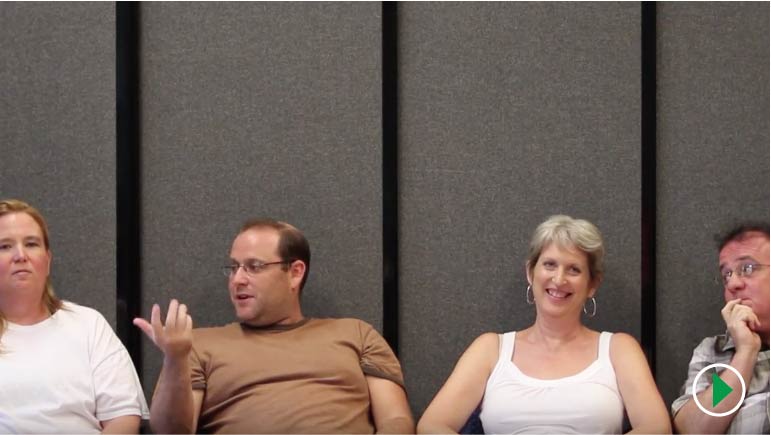 Casina group talkback. |
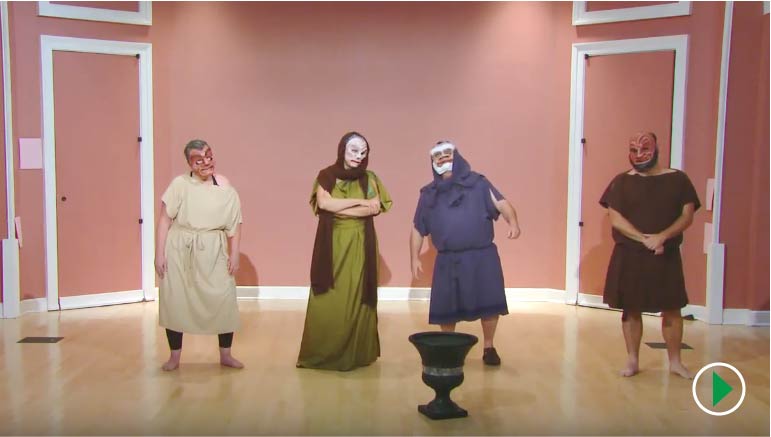 Casina in English with institute's masks |
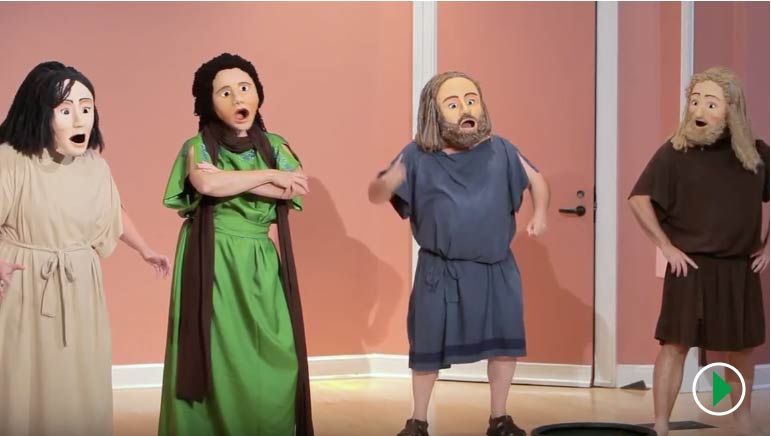 Casina in English with helmet masks |
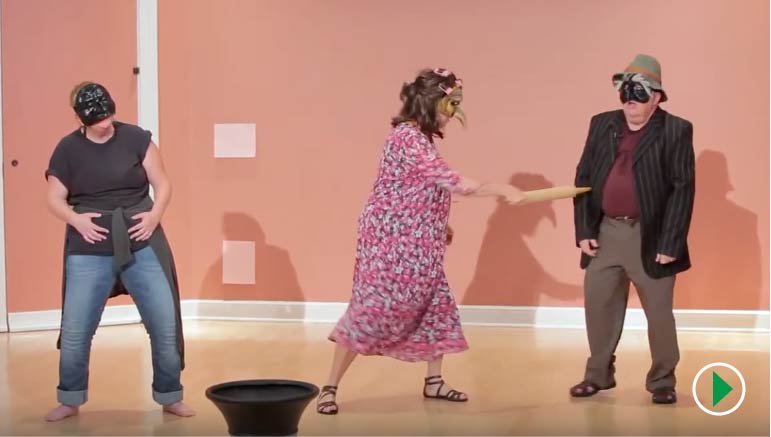 Casina in English with commedia masks plus improv | |
Eunuchus 739-816
The Eunuchus group brought a theater-history perspective to their scenes and their discussion of their choices. Mark Damen, V. Sophie Klein, Kenneth Molloy, and Erin Moodie address different kinds of comedy and varieties of authenticity. They talk about the practical choices of the production, like props and costumes, and how they adjusted those elements, as well as the level of menace, to each of the types of scene (ancient style, Victorian style, and sitcom style). Many of these issues intertwine with their decisions about translation. The group also handles the question of what it means to present an excerpt from a play rather than the whole play.
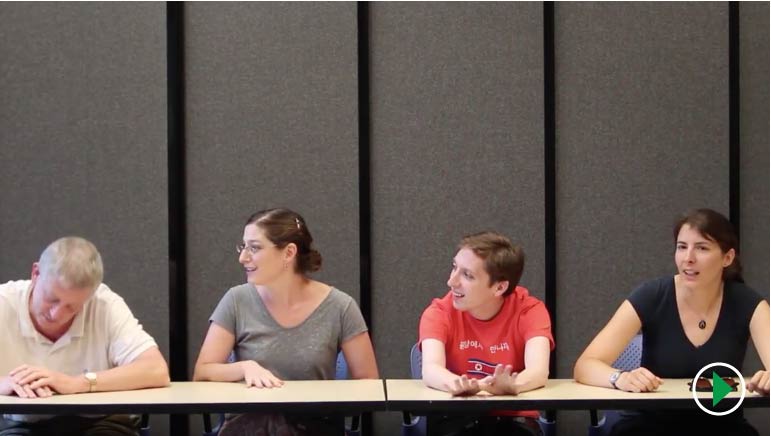 Eunuchus group talkback. |
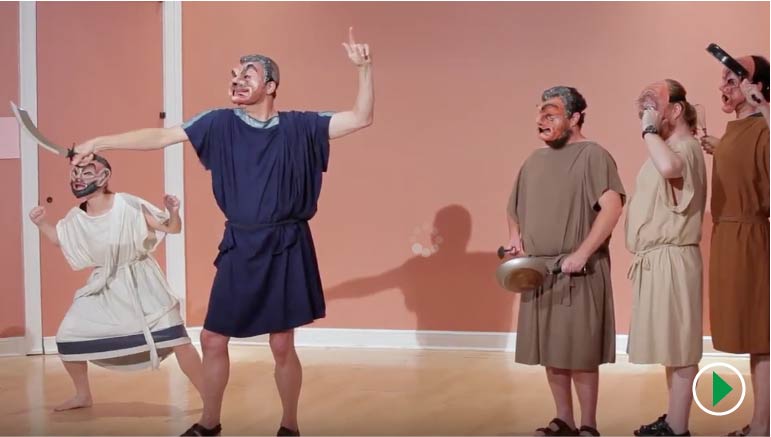 Eunuchus in Latin, ancient style |
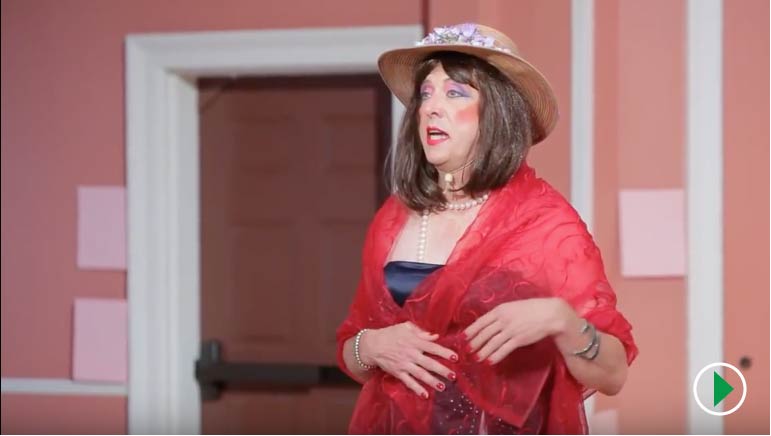 Eunuchus in English, Victorian style |
 Eunuchus in English, sitcom style | |
Mercator 691-802
Chris Woodworth, Christopher Bungard, Daniel Smith, and Steve Ernest—the Mercator group—also talk about different translations and what makes a translation actable. When they deal with the Latin version of the scene, they address acting in another language and the clues that Latin meter and elision can give for staging. The group discuss how they decided in what order to stage their versions, and how different elements, including props, repetition, and excessiveness, contribute to the comedy in the scene.
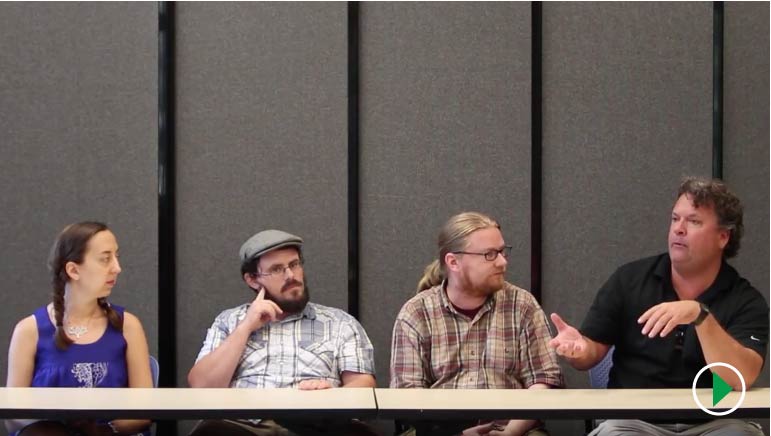 Mercator group talkback. |
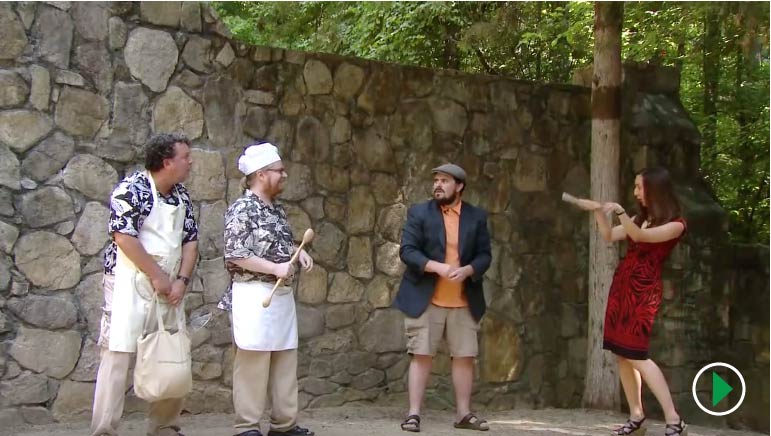 Mercator in Latin with angry Dorippa |
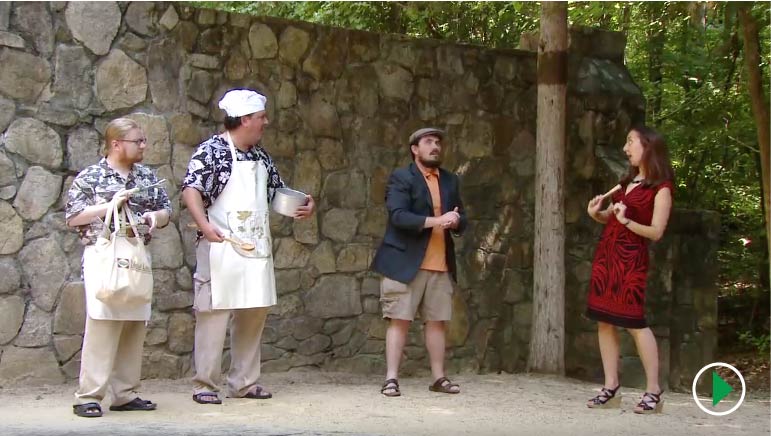 Mercator in English with angry Dorippa |
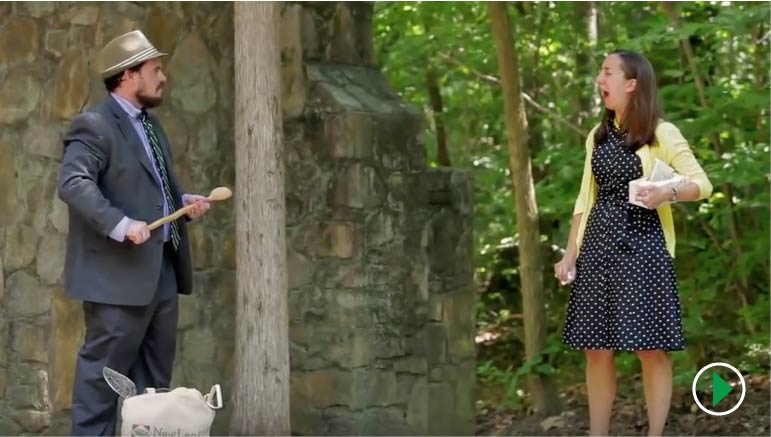 Mercator in English with sad Dorippa | |
Persa 753–757, 801–858
The Persa group—Angela Horchem, Seth Jeppesen, Mimi Kammer, Tarik Wareh, and Amy R. Cohen—discuss at length the challenges of learning their scene in sung Latin while wanting to live up to the imperative to stage fully the action-filled scene and to be clear for a non-Latin-speaking audience. They talk about including the accompanying musician in the scene and how that relates to the probable ancient practice with the tibicen. They emphasize several critical elements in their process: working with a trusted ensemble, looking to the text for staging guidance, while at the same time relying on the language of physical comedy. The whole group is invested deeply in the value of embodying scholarly questions and sees performance as a scholarly apparatus.
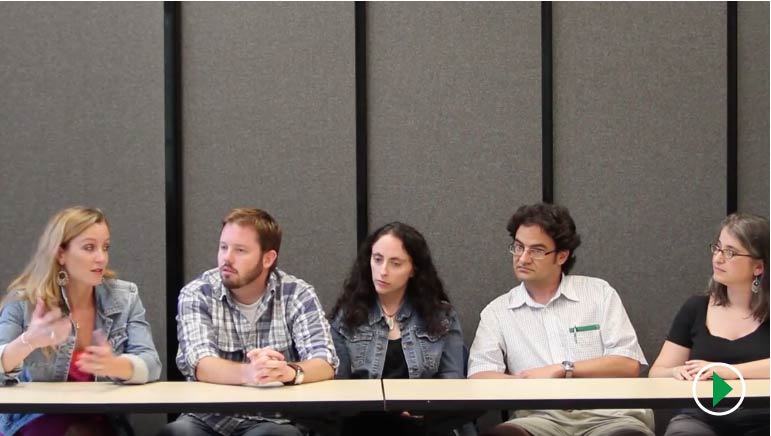 Persa group talkback. |
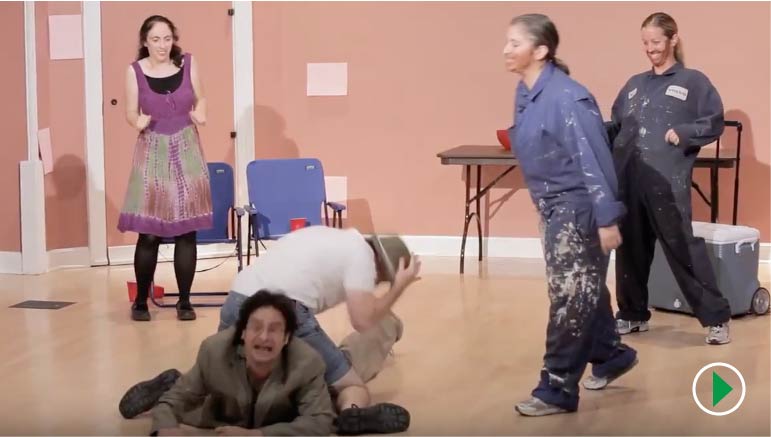 Persa in sung Latin |
|||
Truculentus 775-854
The importance of a trusted ensemble in collaboration is also a major theme of the Truculentus group talkback. Meredith Safran, Laura Lippman, Jim Hanson, and Michael Katchmer also talk about their process of learning the music and the meter for their sung Latin scene and how they found a staging language to embrace the comedy. The group discusses the audience of the videos, how useful they might be in the classroom, and what that meant for their decisions about standards of offensiveness. Unpleasantness in comedy and melodrama are other topics.
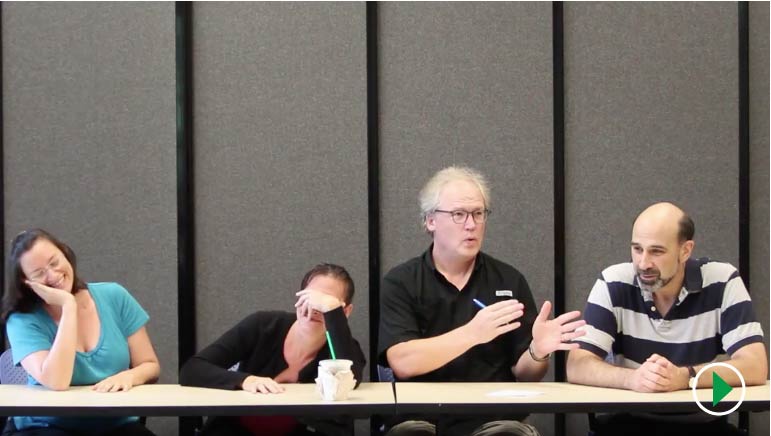 Truculentus group talkback. |
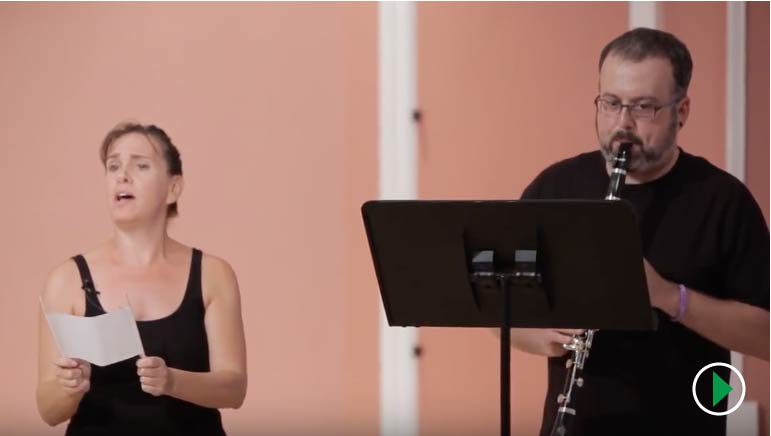 Truculentus melodrama in sung Latin |
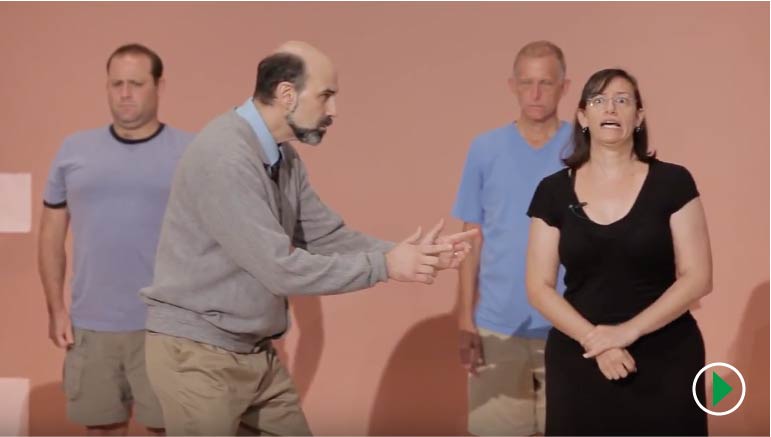 Truculentus melodrama in spoken English |
|||
Pseudolus 133-234
The discussion of our five versions of the same scene from Pseudolus naturally ranges far and wide, and the discussion lasts an hour. The entire hour gives a sense of themes and of the cameraderie that emerged from our four weeks of intensive work, but we have linked to specific moments in the video for those who are interested only in particular groups or topics. Each group first talks about their basic concepts and how they put those ideas into action (Group A, Group B, Group E, Group D, Group C), and then the discussion of the entire group opens up to talk about how to deal with the menace of the scene, what the text doesn't tell you, working as a collaborative team, issues of translation, translation into hip-hop with a Shakespeare vibe, playing an all-male scene, the process of devising and scribing, the grounding of characters in the Latin version, how Group C's break-out scene functioned as a parabasis, whether the group concepts would work for the play as a whole, and how the music was created.
notes
1 The Institute website has more details of the entire program, and Moore and James discuss using the videos in Didaskalia Volume 12, Number 6.
2 Phaedrus 275d-276a.
3 Each group also kept a blog, available on the NEH Institute website, where the group's process can also be found in a day-to-day fashion. When direct links to each blog are available, we will add the links above with each group's talkback.
Additional video editing by Sophia S. Dill.

